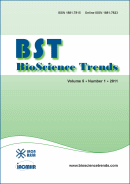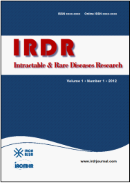Drug Discov Ther. 2015;9(6):380-385. (DOI: 10.5582/ddt.2015.01207)
Optimal cut-off values for the homeostasis model assessment of insulin resistance (HOMA-IR) and pre-diabetes screening: Developments in research and prospects for the future.
Tang Q, Li XQ, Song PP, Xu LZ
Diabetes mellitus (DM) appears to be increasing rapidly, threatening to reduce life expectancy for humans around the globe. The International Diabetes Federation (IDF) has estimated that there will be 642 million people living with the disease by 2040 and half as many again who will be not diagnosed. This means that pre-DM screening is a critical issue. Insulin resistance (IR) has emerged as a major pathophysiological factor in the development and progression of DM since it is evident in susceptible individuals at the early stages of DM, and particularly type 2 DM (T2DM). Therefore, assessment of IR via the homeostasis model assessment of IR (HOMA-IR) is a key index for the primary prevention of DM and is thus found in guidelines for screening of high-risk groups. However, the cut-off values of HOMA-IR differ for different races, ages, genders, diseases, complications, etc. due to the complexity of IR. This hampers the determination of specific cut-off values of HOMAIR in different places and in different situations. China has not published an official index to gauge IR for primary prevention of T2DM in the diabetic and non-diabetic population except for children and adolescents ages 6-12 years. Hence, this article summarizes developments in research on IR, HOMA-IR, and pre-DM screening in order to provide a reference for optimal cut-off values of HOMA-IR for the diagnosis of DM in the Chinese population.







